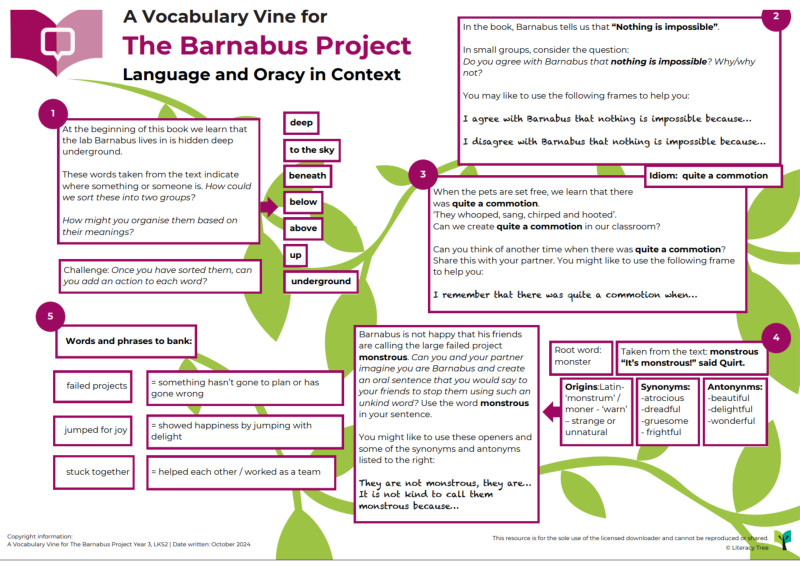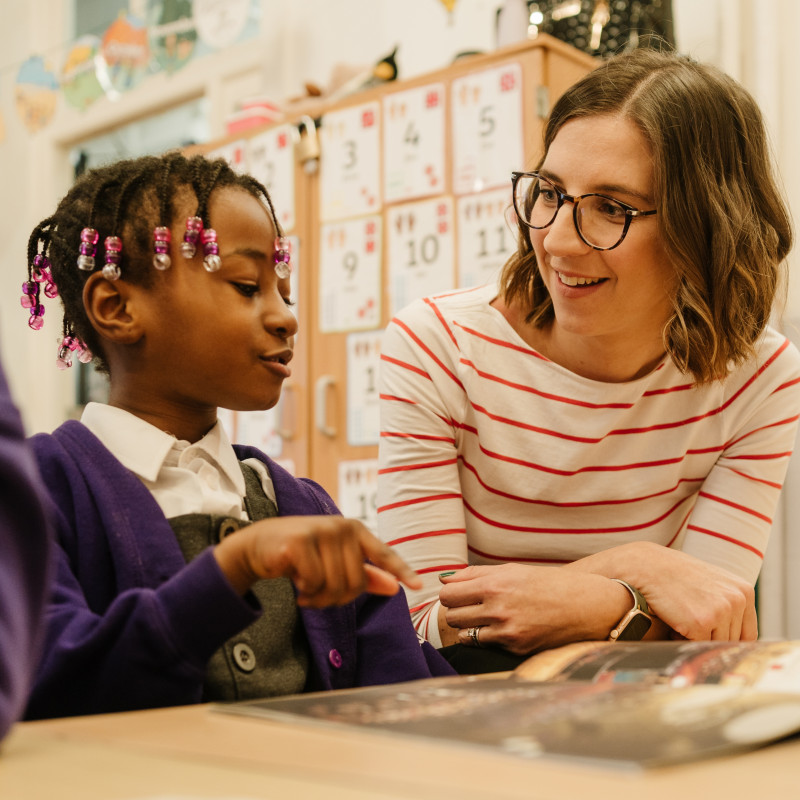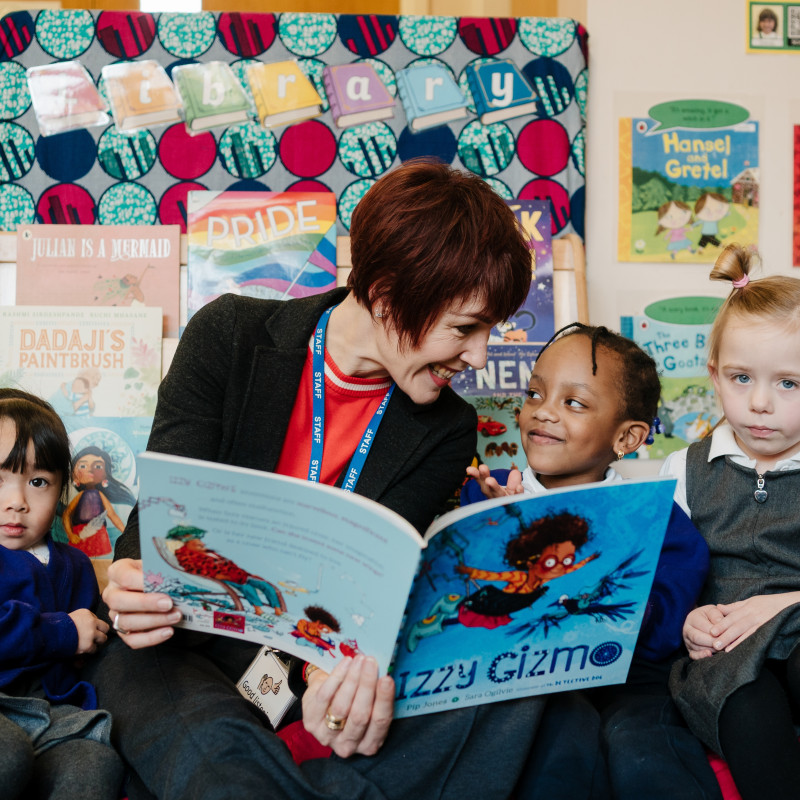Written byHannah Baker
Consultant
See More
Literacy Tree HQ has been abuzz with discussions about oracy and language even more than is usual of late with the very exciting initial launch of our new Vocabulary Vines resource. You will now find twenty of these Vocabulary Vines on our platform (in the planning section) for our Autumn 2 Writing Root texts, with Spring term writing well underway.
If you haven’t seen a Vocabulary Vine yet, it is a sister resource for our Writing Roots and Spelling Seeds. It is a one-page resource that sits within our wider Teach Through a Text™ approach by explicitly identifying vocabulary from a Writing Root book and providing additional opportunities for paired, small group and whole class experimentation with this vocabulary in context. The Vocabulary Vines further complement spelling development too through exploration of the morphology (word structure) and etymology (origins) of words. At the heart of these resources though are opportunities for children to develop and grow their understanding of language through oral discussions with a focus on talk tasks, shaping ideas with purpose and orally constructing responses to share. Activities are designed to be short burst discussions exploring language and oracy in context.
What is oracy?
It is vital with any resource which has talk planned in at the heart of it that we bring our understanding of oracy more widely to it and are clear on what we are wanting to achieve to most support our children when using it. In November I wrote a blog reflecting on the excellent report from the Independent Oracy Education Commission on the future of Oracy Education in England, We Need to Talk, which came out in October. You can find this blog here. In it, I shared what the Commission’s report means for Literacy Tree schools and reiterated the Commission’s definition of oracy.
They broke oracy down into three ‘interrelated, overlapping and mutually reinforcing components’ (p.14) which we explored in turn:
1. Learning to talk, listen and communicate
2. Learning through talk, listening and communication
3. Learning about talk, listening and communication
What is oracy not?
But, just as important as defining what oracy is, we need to be clear on what it isn’t. The Commission’s report is very helpful here too. We are reminded (on page 33 of the report) that:
1. Oracy is not elocution lessons
Oracy education should support and empower all children to build their confidence in communication, expand their linguistic repertoires and equip them to make thoughtful, informed decisions about how to communicate in different situations (p.33). There is no one ‘correct’ way of speaking, as what is considered successful will differ from context to context based on the specific speaker, audience and purpose, and it is vital that all children are included in oracy education. Our practice as teachers will be more successful if we keep in mind this overarching aim of empowering our pupils to make their own purpose-appropriate oral decisions, rather than seeing any oral discussions as a time to insist on a certain form of talk without exception or nuance.
2. Oracy is not purely performative
The report also reminds us that, whilst audience-focused, performative context for talk (such as debating and giving speeches) are an important part of oracy education, they are not the only part of it. We need to embrace the ‘messy, routine and everyday role of talk in learning and in life’ (p.33). Approaching your use of the Vocabulary Vines with this in mind will enable more authentic conversations that put everyday talk at the centre.
3. Oracy is not idle chatter
Talk can powerfully enhance children’s subject knowledge and understanding when embedded in well-planned subject curricula (p.33). To make the most out of these opportunities, explicit teaching on how to talk and listen well in this context is important. Talk is an important business and we as teachers need to give it this status. Having clarity with your class around the expectations of talking and listening with one another during Vocabulary Vine sessions will enhance the benefits of this resource considerably.
4. Oracy is not a checklist of decontextualized skills
Whilst there can certainly be value in breaking down and teaching specific oracy skills to help move children’s oral skills and understanding forwards, the report reminds us of the need to not just teach a list of skills out of context. Purpose and context is, as ever, key.
With all this in mind, Vocabulary Vines provide opportunity to prioritise oracy for all and give you a bit of space in your week to focus on the power of talk alongside building ever-important knowledge and understanding of vocabulary in context. We can’t wait to hear about the discussions you have using them and do keep your eyes peeled as they are added over time to our platform
Posted in: Curriculum | Oracy | Literacy





